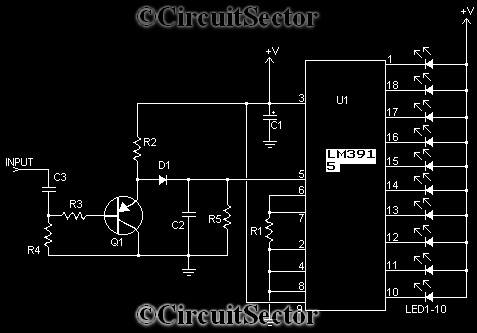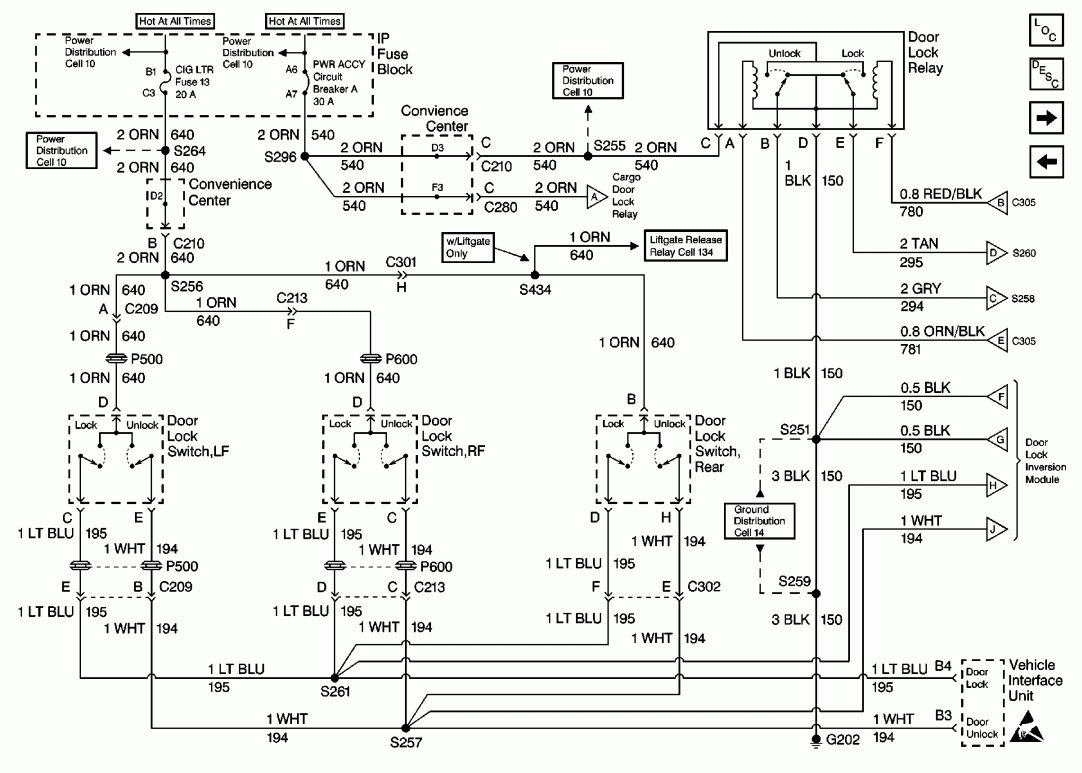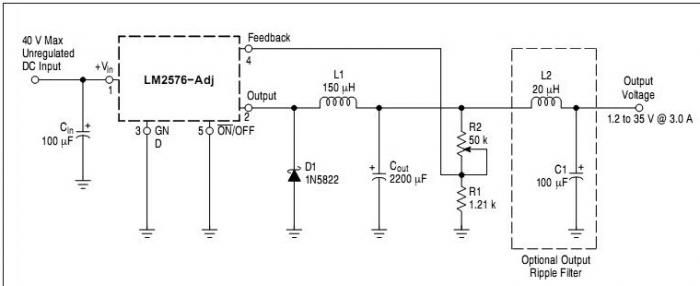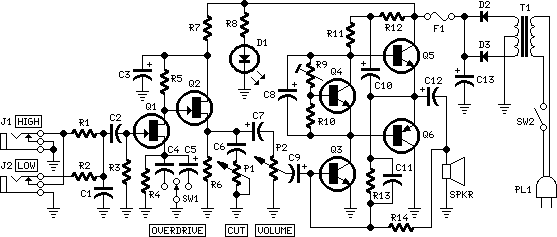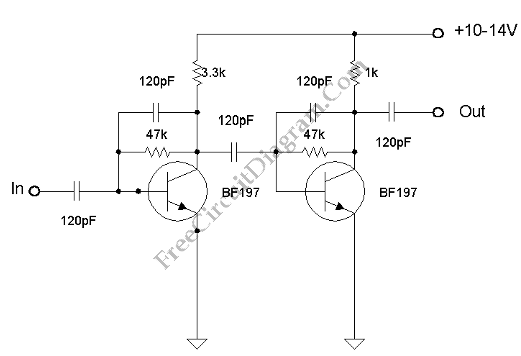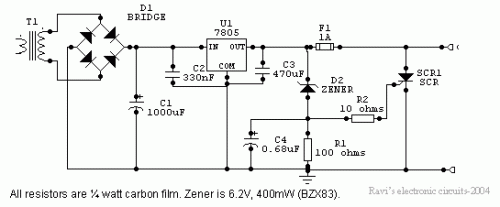
60 Watt Audio Power Amplifier
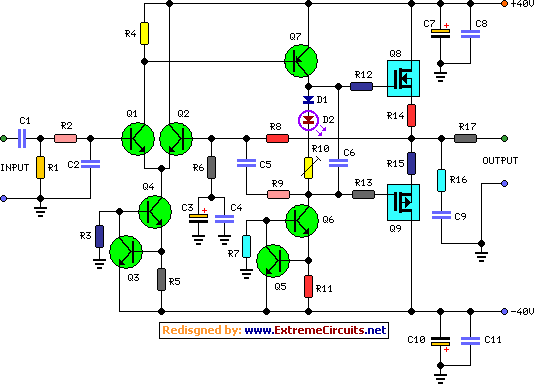
In the original circuit, a series of three diodes was connected to resistor R10. Two of these diodes have been replaced with a red LED to enhance quiescent current stability across a broader temperature range. This modification was suggested by David Edwards of LedeAudio. The values recommended for capacitors C1 and C2 in the Power Supply Parts List represent the minimum requirements for a mono amplifier. For optimal performance in stereo configurations, it is advisable to increase this value; 10,000 µF is considered a suitable compromise. Proper grounding is essential for eliminating hum and ground loops. The ground connections for resistors R1, R3, capacitors C2, C3, and C4, along with the ground input wire, should be connected to the same point. Resistor R7 and capacitor C7 should be connected to capacitor C11 to form the output ground. Additionally, the input and output grounds should be separately connected to the power supply ground.
The circuit design incorporates a series configuration of three diodes, which is critical for establishing a baseline voltage drop necessary for the operation of the subsequent components. The replacement of two diodes with a red LED serves a dual purpose: it not only maintains the desired voltage drop but also provides visual feedback regarding the circuit's operational status. The LED's forward voltage characteristics contribute to improved stability of the quiescent current, particularly beneficial in environments with fluctuating temperatures.
The use of capacitors C1 and C2 is pivotal in filtering and stabilizing the power supply voltage. The minimum values specified ensure that the mono amplifier functions adequately under standard conditions. However, in stereo applications, where load demands are higher, an increase to 10,000 µF is recommended. This larger capacitance value aids in smoothing the power supply output, thus enhancing the overall performance and reducing the likelihood of power supply-induced distortions.
Grounding is a critical aspect of circuit design, particularly in audio applications where noise can significantly impact sound quality. The recommended grounding strategy involves connecting all relevant components—R1, R3, C2, C3, C4, and the ground input wire—to a single ground point. This approach minimizes the potential for ground loops, which can introduce hum and other unwanted noise into the audio signal. Furthermore, the separation of input and output grounds from the power supply ground is essential to maintain signal integrity and prevent interference between different circuit sections.
In summary, the modifications and grounding practices outlined in this circuit description are designed to enhance the performance and reliability of the audio amplifier, ensuring optimal operation across varying conditions while minimizing noise and distortion.In the original circuit, a three-diode string was wired in series to R10. Two of these diodes are now replaced by a red LED in order to achieve improved quiescent current stability over a larger temperature range. Thanks to David Edwards of LedeAudio for this suggestion. The value suggested for C1 and C2 in the Power Supply Parts List is the minimum required for a mono amplifier.
For optimum performance and in stereo configurations, this value should be increased: 10000 µF is a good compromise. A correct grounding is very important to eliminate hum and ground loops. Connect to the same point the ground sides of R1, R3, C2, C3 and C4 and the ground input wire. Connect R7 and C7 to C11 to output ground. Then connect separately the input and output grounds to the power supply ground. 🔗 External reference
The circuit design incorporates a series configuration of three diodes, which is critical for establishing a baseline voltage drop necessary for the operation of the subsequent components. The replacement of two diodes with a red LED serves a dual purpose: it not only maintains the desired voltage drop but also provides visual feedback regarding the circuit's operational status. The LED's forward voltage characteristics contribute to improved stability of the quiescent current, particularly beneficial in environments with fluctuating temperatures.
The use of capacitors C1 and C2 is pivotal in filtering and stabilizing the power supply voltage. The minimum values specified ensure that the mono amplifier functions adequately under standard conditions. However, in stereo applications, where load demands are higher, an increase to 10,000 µF is recommended. This larger capacitance value aids in smoothing the power supply output, thus enhancing the overall performance and reducing the likelihood of power supply-induced distortions.
Grounding is a critical aspect of circuit design, particularly in audio applications where noise can significantly impact sound quality. The recommended grounding strategy involves connecting all relevant components—R1, R3, C2, C3, C4, and the ground input wire—to a single ground point. This approach minimizes the potential for ground loops, which can introduce hum and other unwanted noise into the audio signal. Furthermore, the separation of input and output grounds from the power supply ground is essential to maintain signal integrity and prevent interference between different circuit sections.
In summary, the modifications and grounding practices outlined in this circuit description are designed to enhance the performance and reliability of the audio amplifier, ensuring optimal operation across varying conditions while minimizing noise and distortion.In the original circuit, a three-diode string was wired in series to R10. Two of these diodes are now replaced by a red LED in order to achieve improved quiescent current stability over a larger temperature range. Thanks to David Edwards of LedeAudio for this suggestion. The value suggested for C1 and C2 in the Power Supply Parts List is the minimum required for a mono amplifier.
For optimum performance and in stereo configurations, this value should be increased: 10000 µF is a good compromise. A correct grounding is very important to eliminate hum and ground loops. Connect to the same point the ground sides of R1, R3, C2, C3 and C4 and the ground input wire. Connect R7 and C7 to C11 to output ground. Then connect separately the input and output grounds to the power supply ground. 🔗 External reference
